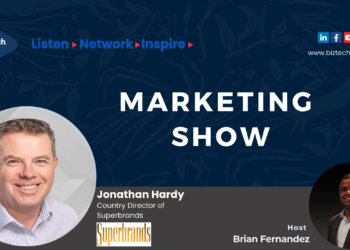- We mustn’t pass the climate challenge on to the next generation, says Jesper Brodin, CEO of Ingka Group, which operates around 400 IKEA stores, worldwide.
- There is a misunderstanding around the world that being climate positive must come at a premium – but the opposite is true, he says.
- To bring its sustainability vision to life, IKEA has developed a plan that involves all parts of its operations: the forest, industry, transportation, and retailing.
Jesper Brodin joined IKEA, the Swedish furniture and home furnishings multinational, in 1995 as a purchasing manager. He is now the CEO of Ingka Group, which owns and operates IKEA Retail in more than 30 countries.
Ingka’s business interests go beyond the world of affordable design. It also owns and operates 45 shopping centres in 15 countries, including MEGA in Russia and LIVAT in China. Plus, it has an investment arm that lists renewable energy and the circular economy as two of its priority areas.
The Ingka Group website describes Brodin as believing in the importance of values-based leadership. “The power is where the people are. Believe in yourself and your strengths, but don’t forget to rely on other people’s strengths, too. Because we’re truly stronger together,” he says.
One of the topics being discussed during the Forum’s Davos Agenda Week is the circular economy, which has the potential to create 700,000 net additional jobs by 2040 and generate savings of up to USD200 billion a year.
In conversation with the Forum, Brodin explains why embracing circular thinking has become a core business priority for IKEA, too.
Can you explain what climate positive means to you and why it is important to IKEA?
It’s 2021; with all we know now, I believe we simply can’t pass the climate on as a challenge for the next generation. At IKEA, we are in touch with millions and millions of customers – hundreds of millions of them, and we know from them that this issue matters. So, even just as a business that cares about its customers, we think it is essential to be relevant to people.
But this approach is also the new low cost. It’s the new business model of the future. There is a great misunderstanding around the world that being climate positive must come at a premium or that it will only be within reach of the few. But it’s actually the opposite.
To bring this vision to life at IKEA, we’ve developed an extensive plan that involves all parts of our operations, from the forest, industry, transportation, and retailing. We have invested in more renewable energy – wind and solar – than we consume in our retail and logistics operations. And by 2025 we want all home deliveries from IKEA to be done with electric vehicles.
Last year you experimented with buying back used goods over Black Friday. Do you see that as being a bigger part of IKEA’s future?
If you go to any online marketplace, you will find that when it comes to furniture, IKEA is probably top of the list. So this has always been part of the story of IKEA furniture. Now, we are testing second-hand sales and buy-back leasing as new ways to interact with our customers.
We have configured our stores to have a dedicated space to resell the products we take back and the products we use in our showrooms. We’re trying to make sure that nothing goes to waste. The interest from customers has been phenomenal.
Another of your goals is for 100% of IKEA products to be circular. Can you explain what that means?
We have an overall target to be climate positive by 2030. That relates to our own activities and to the activities throughout our value chain. Getting there means hitting several smaller but just as important targets in order to achieve our aim.
So, when it comes to our products, our target is for them to be 100% renewable or recyclable. That calls for making sure products can be broken down into parts in an easy way. It’s about long-lasting solutions, too. We have a business that makes new mattresses of old ones. That’s one example.
But the other part of the equation is to understand it is still okay to use raw materials as long as they’re renewable, like well-managed forestry with a climate neutral value chain.
How do you see IKEA transforming and fitting into this new world where we’re trying to buy less things?
I think this is an incredibly important topic. Historic attitudes towards consumption are not a realistic way for humanity to live and aren’t a practical solution for anyone.
An important part of this is defining what sustainable consumption looks like – what is a climate neutral, climate-positive level of and approach to consumption?
Obviously, unnecessary consumption is a significant part of the challenge. One way to tackle that is to emphasize the development of long-lasting, quality products. For us, that has meant identifying ways to create items of furniture that can be disassembled and reassembled again many, many times without damaging the product’s quality.
When you’re designing IKEA products are you thinking about their possible second-hand life?
Designing it for recyclability is important. But those kinds of design principles aren’t really unique to IKEA – at least, they shouldn’t be. They are common sense and I think they represent good economics. Why waste resources?
It’s important to make a low-priced, desirable product that is designed to be easy to disassemble so it can be broken into its constituent parts – wood, metal, plastic and so on.
If you take old-school, traditionally made mattresses, for example, it would be very difficult to disassemble them. Separating the metal springs and the foam and the textile fibres and so forth. So now we design it differently and it is made so that it is easier to take it all apart at the end of its life.
When we’re designing products, we’re thinking about them as items you can move with, or sell, or pass on many times. All without the risk of destroying the materials that item is made from.
This article is republished from World Economic Forum.
















